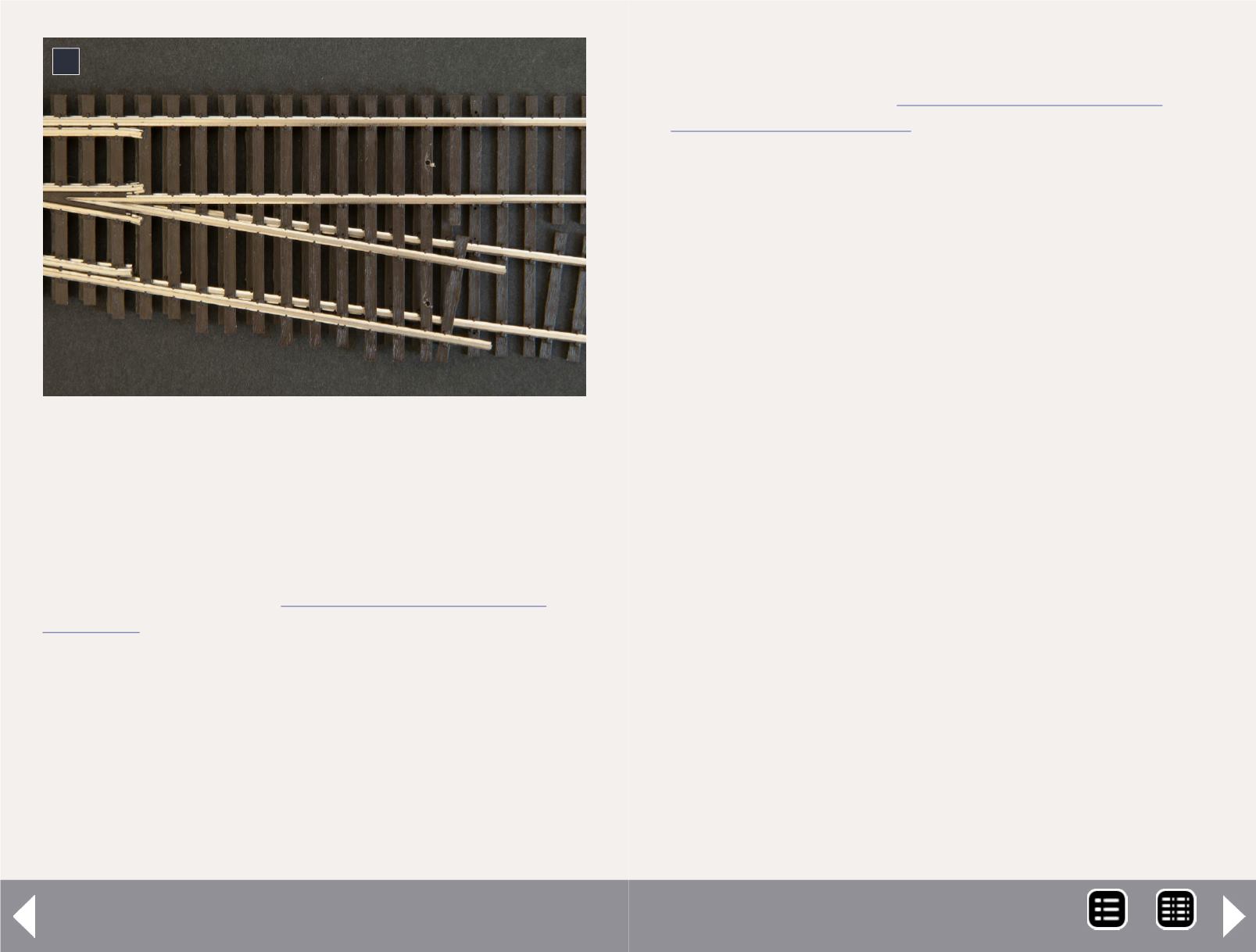
The original discussion is at
Mixed-frog crossovers
Q.
To make a crossover using # 6 & #8 turnouts (Walthers
Shinohara code 83), what is the formula for the cut so they
match the 2” NMRA standard?
– James McMahon
A.
There really isn't a 2” NMRA standard for track spacing,
although that spacing is pretty common on model railroads.
3: With a #6 switch sitting on top of a #8 switch, it's easy
to see the difference in frog angles. The tips of the frogs
are aligned. The #6 diverges at a greater angle than the #8,
and the combination will not produce a smooth crossover
if the two are installed face-to-face.
3
Questions, Answers & Tips - 4
Mainline track spacing has increased over the years, and
we talked about it back in October 2012, in the Questions,
Answers & Tips column at
The big issue here is mixing #6 and #8 frogs. As my dad said
when I was building boats, “that isn't going to float.”
Here's the problem. The frog angle on a #6 switch is some-
where around 9½ degrees and a #8 is a little over 7. If the
diverging route from a right-hand #6 is placed atop the diverg-
ing route from a right-hand #8, the trouble is apparent (3).
They don't line up and there will either be a kink, or a curve
to make the connections. 2” track spacing doesn't allow much
room for a workable curve.
If there is not much room, the crossover can be built using a
pair of #6 switches and these will line up perfectly. If there's
more real estate available, or long cars are being run, use two
#8 switches.
To lay out the cuts, you need a straightedge, a small square or
right triangle, and a fine-point marker. Draw parallel lines for
your track, 2” apart, or whatever spacing you choose. Position
one switch and tack it in place with push pins so it can't move
around. This should be the switch that has to be precisely posi-
tioned – because it leads into a curve, or would conflict with
other trackwork, or whatever.
Measure and mark the center line of the second switch with a
pencil mark or drill a hole at each end of the switch. Place this
on the second line drawn on the benchwork, then slide it along
until the diverging routes of the two switches overlap. Then
pin or tape the second switch into place. Measure the distance
MRH-Jun 2013


